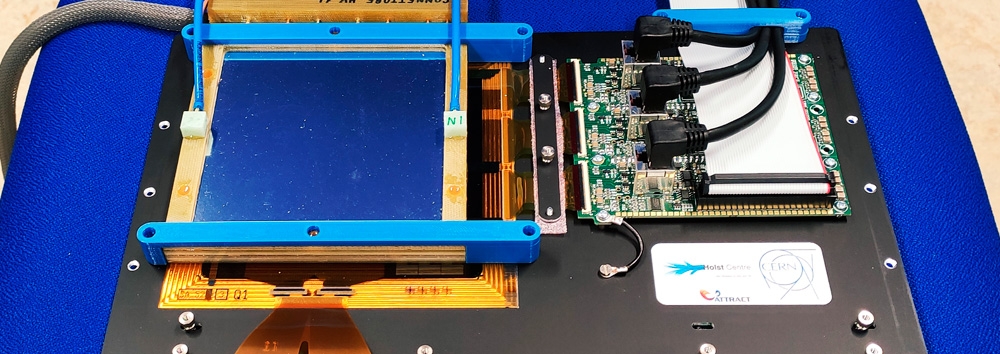©LaGEMPix
What has the ATTRACT seed funding enabled you to do so far?
The ATTRACT seed funding has allowed us to develop a large area detector (the LaGEMPix) for application in hadron therapy, by introducing an innovative readout technology to our successful project based on the GEMPix detector. The GEMPix is a novel detector developed in the past few years by our team within CERN Radiation Protection group. It combines two CERN technologies: a triple GEM (Gas Electron Multiplier) and a Timepix quad ASIC as highly pixelated readout. Currently the GEMPix, with an active area of 28 x 28 mm2, provides 2D images, the Bragg curve and a reconstruction of the 3D energy deposition of clinical carbon ion beams in a water phantom with high spatial resolution. However, to cover the typical field size in radiotherapy of 20 x 20 cm2, we are now developing a detector with a larger sensitive area, replacing the Timepix quad ASIC by an innovative readout based on a matrix of organic photodiodes coated on an oxide thin film transistor backplane. The new readout was designed to match the larger GEM’s surface resulting in a six times larger active area of 60 x 80 mm2. Moreover, we have designed a light and water tight Poly(methyl methacrylate) PMMA box to be mounted on the motorised positioning system of the water phantom.
What challenges have you faced so far?
The conception, prototyping and production of this new larger area detector has been a big challenge for us since we had to modify the design and operation mode of the detector. The new readout requires the detection of optical photons instead of electrons, which has implied the use of a different gas mixture to match the wavelength of the emitted photons with the readout acceptance spectrum, use a radiation hard transparent anode to collect the electrons while being optically transparent to the emitted photons, and redesign the readout electronics to reduce the potential radiation damage caused by the beam. We performed a characterisation of the new detector to maximise the light yield and hence increase the detection efficiency, which has required the development of a new analysis code framework.
Where does your ATTRACT journey go from here?
The next step is to finalise the characterisation of the detector in different radiation fields, including its response in terms of radiation hardness. We will perform, for the first time, measurements using clinical proton and carbon ion beams in order to validate the detector for its use in hadron therapy. Our final goal is to develop a 20 x 20 cm2 detector and to compare the results with conventional techniques currently used in hadron therapy.
Sum up in two sentences the advantages of the ATTRACT Programme over other research funding schemes.
We appreciated the lightweight process for submission of the funding request and the easy and little time-consuming quarterly reporting. We also appreciate the easy interaction with the ATTRACT Project Office and their support when needed.
For more information
Visit the LaGEMPix project site.


